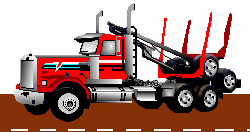If you’re looking to make money with a dump truck, building contractors, landscaping companies and homeowners are your target clients. Get a commercial driver’s license (CDL), set up your business and spread the word.
1
Prepare for business. Get your CDL, which will enable you to legally operate a dump truck. Check your local ordinances for any additional training or licensing requirements for operating an independent dump truck business before you can begin to solicit jobs.
Contact the IRS to obtain a tax ID number for your business and open a business bank account. Have business cards and letterhead printed for your company that you can mail or leave with building contractors, landscape supply managers and homeowners. You will make a more professional impression if you leave your contacts with relevant pricing and contact information, along with a copy of your credentials. Better business impressions translate into more money for your business.
2
Contact landscape suppliers in your area, advising them that you are available to move dirt, mulch and other landscaping materials on a contract basis. Talk to the store managers in person, leaving them a packet with your business card, rate information and certification documents for owning and operating the dump truck.

3
Run an ad in several local papers and in the yellow pages describing the types of work you are available to do with your dump truck. Homeowners who enjoy do-it-yourself landscaping or renovation projects need your services to haul in or remove materials as they excavate or remodel. Advertise on Craigslist and other online sources for free exposure.
4
Make money with your dump truck by working with local builders as an independent contractor. New construction projects always need the services of a dump truck to move debris to the landfill as well as moving dirt and other landscaping materials. Contact the builders personally by phone or at a job site. Follow up with the same printed materials you left with the landscape supplier.
5
Contact your local city transportation services to inquire about winter snow removal jobs or other contract positions it may have available. You can also contact other snow removal companies to let them know you’re available for their overflow.









 Shop around carefully for car insurance. There are several websites available that you can use to compare rates such as esurance.com. You also need to evaluate whether you should have collision and comprehensive coverage on your older car. Keeping minimal liability coverage can drastically lower your premiums. Also, if your cash reserves are sufficient, raising your deductible will reduce the cost of your coverage as well. Finally, having more than one type of policy with the same
Shop around carefully for car insurance. There are several websites available that you can use to compare rates such as esurance.com. You also need to evaluate whether you should have collision and comprehensive coverage on your older car. Keeping minimal liability coverage can drastically lower your premiums. Also, if your cash reserves are sufficient, raising your deductible will reduce the cost of your coverage as well. Finally, having more than one type of policy with the same 
